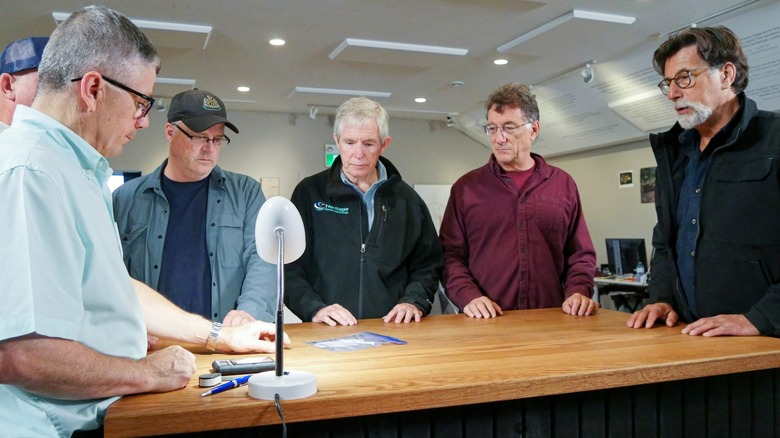The Curse Of Oak Island Season 11: Rick & Marty Lagina Break A Record In Episode 1
The premiere of "The Curse of Oak Island" Season 11 is a big deal for numismatology fans (as well as those looking for a new five-dollar-word to add to their vocabulary).
In Season 11, Episode 1, "On the Money" (which aired Tuesday night on the History Channel), the Lagina brothers team up with metal detection expert Gary Drayton to find not one, not two, but three different coins in a single morning's search of Lot 5. "I think this is a record," marveled Marty Lagina. "Three coins in one morning, and all of them peculiar and perhaps ancient. These are potentially major league finds."
The first of the three coins discovered — initially suspected by Marty Lagina and Gary Drayton to be of Roman origin, based on the "hand-hammered" look — was approximately just 30 yards from where half of a broken Roman coin was found a year earlier. These three coins weren't even the only ones found in the Season 11 premiere, as Drayton and diver Tony Sampson discover two more on separate excursions. Though provincial law temporarily prevents the extraction and study of Sampson's submerged coin (which he theorizes generally could be Chinese in origin), the four other coins were taken to numismatist Sandy Campbell — who confirmed that yet another record was broken during this episode.
The Oak Island Fellowship have uncovered one of their oldest artifacts yet
All four coins are taken to the Oak Island Interpretive Center, where Sandy Campbell is able to examine them closely in order to determine their place and date of origin. Two of the coins, though exciting in their own right, do not contribute to the intriguing trend of Roman artifacts appearing within the bounds of Lot 5 (one, a Tudor-era British coin; the other, an Indian coin dating back somewhere between the 6th and 8th centuries).
Two of the coins, however, do seem Roman to Campbell, though from entirely different time periods. While one comes from 100-300 A.D., the other comes from the B.C.-era and is estimated to be well over 2,000 years old. Also speculated to be a French denier, Campbell is certain that the denomination is likely the oldest coin to have been discovered on Oak Island. If this turns out to be accurate, this would be a huge victory for the Oak Island Fellowship, and an impressive way to kick off yet another year of treasure hunting.

